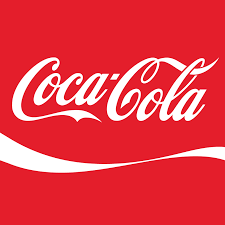Process Failure Mode Effects Analysis (PFMEA) By André Vondran
A Process Failure Mode and Effects Analysis (Process FMEA) is a systematic, detailed, form-driven analytical procedure used to identify potential process causes of part and process failures.
A PFMEA is a disciplined review and analysis of a new or revised process and is conducted to anticipate, resolve, or monitor potential problems in the production process.
A PFMEA focuses on potential product failure modes caused by process deficiencies and it also helps to identify actions that would eliminate or reduce the chance of the potential failure mode from occurring by determining root cause and recommending corrective action.
A PFMEA is a living document and needs to be reviewed and updated as new failure modes are discovered.
For further information on the creation and maintenance of PFMEAs refer to AIAG Potential Failure Mode and Effects Analysis (FMEA) reference manual.
Purpose
A Process FMEA identifies potential product-related process failure modes and defines controls to prevent or detect the failure conditions. Process FMEAs quantify the effect of these failures on the customer through multiplication of rankings for severity of effect (Severity), ability of current controls to detect the manufacturing or assembly causes of the failure mode (Detection), and the probability that the failure mode will occur (Occurrence). Severity, Detection, and Occurrence are ranked on a scale of 1 to 10, with 1 being the lowest ranking and 10 being the highest. The product of the Severity, Occurrence, and Detection rankings is the Risk Priority Number (RPN). The team uses this number to prioritize failure modes for recommendation for corrective action. These corrective actions should be included in a Control Plan. Process FMEAs must be team-based. The strength of a Process FMEA relies upon brainstorming to identify all potential failure modes, root causes, and appropriate corrective actions.
When should the tool be applied/not applied?
FMEAs should be developed or reviewed when:
- A new part or assembly is created
- An existing part or assembly is changed
- A new Failure Mode is identified
- Carryover part or assembly is used in a new environment
- Carryover part or assembly is used in a new application
- Cyclic review requirements per Supplier’s Quality Manual
Who Uses the Tool
- General Managers (GM)
- Project Managers (PJM)
· Cross Functional Team (CFT)
· Manufacturing/process engineers
· Implementation Managers (IM)
· Test engineers
· Supplier
Resources Required
· A team of representatives from all appropriate departments/areas
· Administration, i.e., completing form, arranging meetings, following up on recommended actions
Benefits
Correctly executed, a Process FMEA can:
· Minimize, or ideally, eliminate potential failure modes through changes to the manufacturing and/or assembly processes.
· Identify potential failure modes prior to production so that actions are preventative, not reactive.
· Result in solutions, when team is cross-functional, that take all affected areas into consideration.
· Be used as a living document (updated during the product lifecycle), providing an historical record of issues identified and resolved.
Stages of MSRP
Process FMEAs are useful during the following stages of Multi-Stage Release Process (MSRP):
Planning Stage:
Process FMEAs can help the CFT to develop and identify detailed System and/or Component Level Objectives based on those defined in the Concept Approval Stage. They can be used to meet the following deliverable:
· Key Process Characteristics (Preliminary)
Development Stage:
Process FMEAs can help the CFT verify component and design capability ( System, subsystem or component ) preparation for the build of Program Vehicles. A Process FMEA can be used to meet any or all of the following Development Stage Outputs:
· Process Descriptions
· List of High Risk Process Failure Modes and Corrective Actions
· Key Process Characteristics
· Preliminary Manufacturing Control Plans
· Product and Process Development Risk Assessment
Validation Stage:
Process FMEAs can be used by the CFT to help verify that a design is capable of being manufactured and assembled, while meeting all of the program's goals and constraints. PFMEA can also be used to help optimize, finalize, and validate the manufacturing process through a production trial run. They can be used to meet the following Validation Stage Outputs:
· List of High Risk Process Failure Modes and Corrective Actions
· Sub-Supplier PPAPs and Supporting Documentation
· PPAP
· Finalized Key Process Characteristics
· Manufacturing Control Plans
· Updated Process Descriptions
· Preventative Maintenance Schedule
Continuous Improvement Stage:
Process FMEAs can help teams optimize processes to improve productivity with the end goal of improving customer satisfaction. They can be used to help meet the following output:
· Change Notices
Evaluate Effective Use (ok)
Below are basic questions that will help you focus your analysis of Process FMEA. This is not a comprehensive list ofeverything that should be reviewed, only a guideline.
When attempting to evaluate whether a Process FMEA was executed properly, ask any or all of the following questions:
· Were field incidences, warranty data, and other customer inputs considered in determining Severity, Occurrence, and Detection in the Process FMEA?
· Were the potential failure modes and their rated severities identified in the Design FMEA used as inputs to the severity rating in the Process FMEA?
· Why was the FMEA done? Is this an historical problem area? A safety issue? New or unproven technology?
· Have the potential failure modes been prioritized so that the highest risk issues are highlighted and the need for corrective action addressed? Are failure modes with severities of 8, 9, or 10 being addressed?
· Was a previous generation Process FMEA developed for similar equipment, assembly process, and layout used to guide the development of the current document?
· Are key process characteristics identified by high Risk Priority Numbers?
· Was the initial Process FMEA completed and available prior to the development of the Control Plan?
· Was a risk analysis completed as a first step?
· Were process steps clearly defined?
· Were all departments/parties affected represented on the team?
· Did the team carry the highest Severity across the form for all effects of each potential failure mode?
· What RPN values and criteria do you use to pursue corrective actions? What are the significant issues that you are pursuing for corrective action?
· Do the corrective actions for the highest RPNs seem adequate? Is the recalculated RPN significantly lower than the original?
· Have you considered an Error/Mistake Proofing solution in your recommended actions?
· What's the timeframe for implementation of the recommended actions? Who has been assigned responsibility for corrective actions?
· How are recommended actions being tracked? Does the team meet periodically to review progress?
· Have the recommended actions been incorporated into and cross-referenced to a control plan?
· Have you run into any bureaucracy that is hindering you from pursuing corrective action?
· How is the document being managed? Is the document being updated on a continual basis?

Best Regards · Mit freundlichem Gruß · Cordialmente ·
Artículos de Andre Vondran
Ver blog
Durante años, la demanda de CFOs a los jefes de TI en la industria automotriz fue: Off the cloud! · ...

El aspecto clave del Liderazgo es contribuir con los miembros del equipo y motivarles genuinamente a ...

Es bastante habitual que los compromisos no se cumplan, o los resultados no son los anticipados. · C ...
Puede que te interesen estos puestos de trabajo
-

quieres ser un mover by fue?
Encontrado en: beBee S2 ES - hace 14 horas
FUNDACIÓN UNIVERSIDAD-EMPRESA Madrid, España PrácticasTenemos un notición La séptima edición de Movers by FUE ya está en marcha, buscamos 20 jóvenes con ganas de mover el mundo para que formen parte de esta iniciativa, y tú puedes ser uno de ellos · ¿Todavía no sabes qué es Movers by FUE? · Es un reconocimiento a la actitud diferenc ...
-

Graduate Business Process
Encontrado en: Talent ES C2 - hace 9 horas
Coca-Cola Europacific Partners Madrid, España De jornada completa¿Has soñado alguna vez con trabajar en el departamento de Business Process & Technology en una empresa como Coca-Cola? · Pues tenemos buenas noticias Si hace menos de tres años que has terminado tus estudios de Grado o Máster, ahora puedes optar a iniciar tu carrera profesional ...
-
Diseñador Mecánico CAD reubicación Eslovenia
Encontrado en: Talent ES C2 - hace 2 días
TTA Personal GmbH Madrid, España De jornada completaTTA "tu trabajo en Alemania", somos la consultora de Recursos Humanos líder en la colocación de profesionales hispanos en todo el territorio alemán. En la empresa internacional, fundada a finales del 2010 con base en Berlín y Múnich, trabajamos con la premisa de que todo el mundo ...

Comentarios